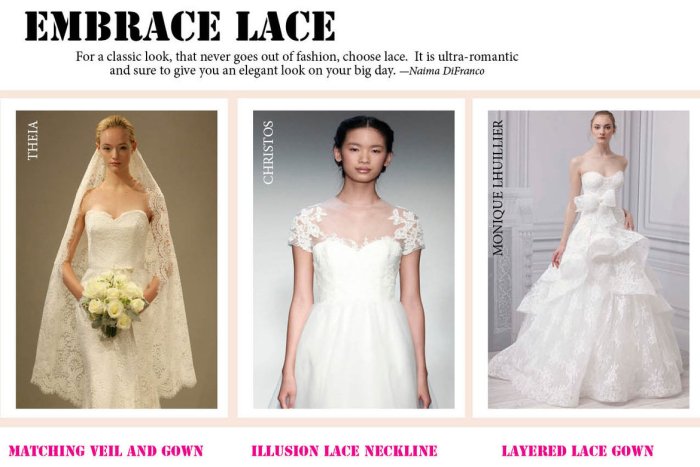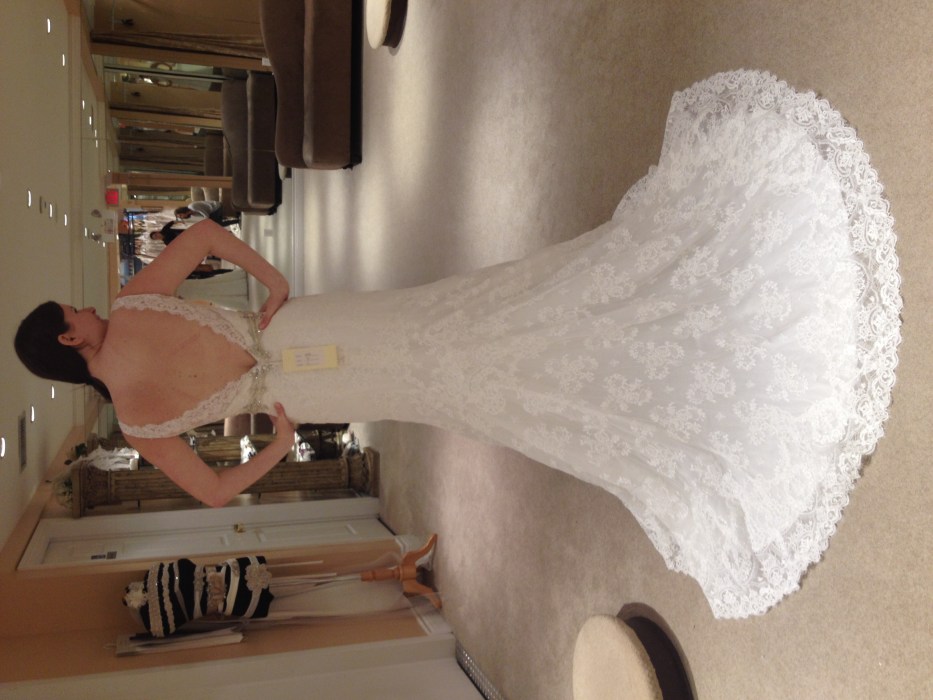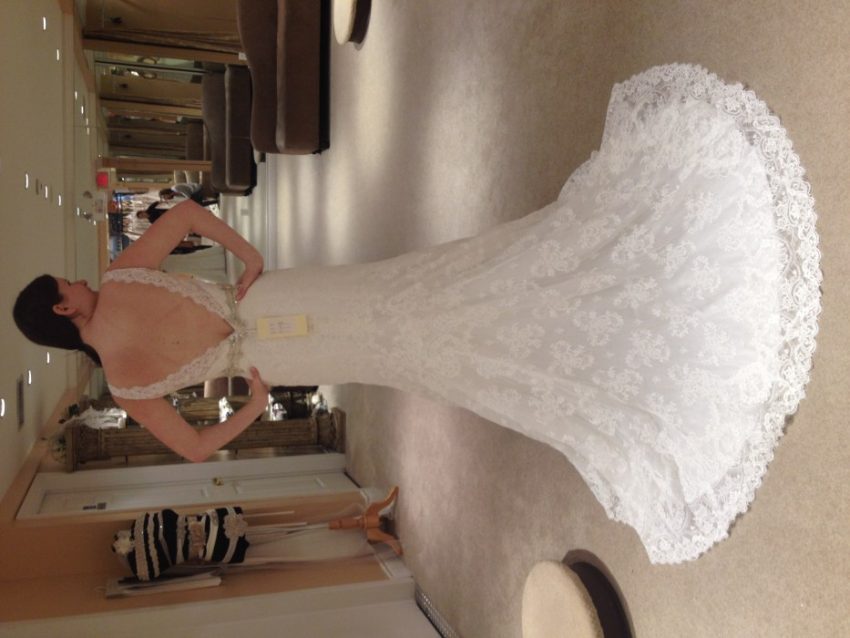Full Lace Wedding Dresses: A Comprehensive Guide
The timeless elegance of a full lace wedding dress captivates brides worldwide. This guide delves into the intricacies of these exquisite gowns, exploring design elements, fabric choices, care instructions, and cost considerations to help you navigate the world of full lace bridal wear.
Defining Full Lace Wedding Dresses
Full lace wedding dresses are characterized by the extensive use of lace as the primary fabric, covering the entire gown, or nearly so. This distinguishes them from dresses featuring lace appliqués or accents. The lace itself can vary significantly in type, pattern, and texture, contributing to the dress’s unique character.
Types of Lace Used in Wedding Dresses
Several lace types lend themselves beautifully to wedding gowns. Chantilly lace, known for its delicate floral patterns and soft drape, is a popular choice. Alençon lace, with its intricate geometric designs and high-quality construction, offers a more luxurious feel. Venise lace, a heavier type with raised patterns, provides a richer, more substantial look. Other laces, such as Guipure, offer unique textures and patterns, each contributing to the dress’s overall aesthetic.
Comparison of Full Lace Dresses with Other Styles, Full lace wedding dress

Source: bridalguide.com
Compared to other wedding dress styles, full lace gowns offer a distinct level of romanticism and sophistication. While simpler styles like A-line dresses in satin or crepe might emphasize clean lines, full lace dresses showcase intricate detailing and texture. Similarly, dresses with lace appliqués offer a touch of lace, but lack the complete coverage and inherent elegance of a fully lace gown.
Craftsmanship in Creating a Full Lace Wedding Dress
The creation of a full lace wedding dress is a meticulous process. Skilled artisans carefully select and prepare the lace, often hand-placing delicate motifs and embellishments. The construction requires precision to ensure a flawless fit and drape, often involving hours of hand-sewing to create a seamless and luxurious final product. The process involves pattern making, cutting, and sewing the lace, often layered with other fabrics for support and structure.
Design Elements and Styles
The versatility of lace allows for a wide array of design possibilities. Necklines, silhouettes, and embellishments all contribute to the unique personality of each gown.
Three Unique Full Lace Wedding Dress Styles
- Style 1: Sweetheart neckline, A-line silhouette, intricate floral Chantilly lace with scattered pearl embellishments. A chapel-length train adds a touch of drama.
- Style 2: High neckline, sheath silhouette, geometric Alençon lace with delicate beading along the seams. Long sleeves add a touch of classic elegance.
- Style 3: Illusion neckline, mermaid silhouette, scalloped Venise lace with a dramatic cathedral-length train. The illusion neckline adds a touch of modern flair.
Lace Patterns and Body Types
| Lace Type | Body Type | Pros | Cons |
| Chantilly | Petite, Hourglass | Soft drape accentuates curves; delicate pattern doesn’t overwhelm | May not offer enough structure for larger busts |
| Alençon | Tall, Slim | Intricate details create visual interest; structured lace provides shape | Can appear heavy on smaller frames |
| Venise | Curvy, Athletic | Heavy lace provides structure and support; bold patterns create a statement | Can be less forgiving of imperfections |
| Guipure | Most body types | Versatile; offers a variety of patterns and textures | Can be difficult to work with depending on design |
Impact of Lace Colors and Textures
The color and texture of the lace significantly impact the overall aesthetic. Ivory lace offers a classic, romantic look, while blush or champagne lace adds a softer, more modern feel. The texture, whether delicate and airy or heavy and substantial, influences the dress’s drape and visual weight.
Current Design Trends in Full Lace Wedding Dresses
Current trends favor a blend of classic and modern elements. Delicate floral patterns remain popular, alongside geometric designs and the incorporation of illusion necklines and sleeves. Sustainable and ethically sourced lace is also gaining traction among environmentally conscious brides.
Fabric and Materials
While lace is the star, other fabrics often play supporting roles in full lace wedding dresses, enhancing their structure, comfort, and overall appeal.
Full lace wedding dresses offer a timeless elegance, perfect for brides seeking a romantic and sophisticated look. Finding the ideal design often involves exploring various options, and a great resource for inspiration and potential DIY projects is browsing through the extensive collection of dress patterns for weddings available online. This can help you envision and even create your dream full lace wedding dress, ensuring a truly personalized and unforgettable bridal experience.
Fabrics Used with Lace
Silk, satin, and tulle are frequently used in conjunction with lace. Silk provides a luxurious drape and sheen, satin offers a smooth, elegant finish, and tulle adds volume and support, particularly in the skirt. These fabrics can be used as linings, underlays, or even as accents, depending on the design.
Drape and Feel of Different Lace Fabrics
Chantilly lace, for instance, is known for its soft drape and delicate feel, while Alençon lace offers a more structured, firm feel. Venise lace provides a heavier, more substantial texture. The choice of lace directly influences the overall feel and movement of the gown.
Manufacturing Process of a Full Lace Wedding Dress
The process begins with fabric selection, pattern creation, and cutting. The lace is then carefully sewn together, often with additional layers of fabric for support and structure. Embellishments like beads, sequins, or embroidery are added, followed by final finishing touches, including hemming and alterations.
Advantages and Disadvantages of Lace Fabrics
- Advantages: Exquisite detailing, romantic aesthetic, versatility in design, timeless appeal.
- Disadvantages: Can be delicate and require careful handling, may be more expensive than other fabrics, can be difficult to clean.
Care and Maintenance
Proper care is crucial to preserve the beauty and longevity of a full lace wedding dress. Understanding how to clean, store, and handle the garment is essential.
Tips for Caring for a Full Lace Wedding Dress
Avoid harsh chemicals and abrasive cleaning methods. Always handle the dress gently, and avoid pulling or stretching the lace. Regularly inspect the dress for any signs of damage or wear.
Cleaning and Storage Methods
Professional cleaning is recommended to prevent damage. When storing, use a breathable garment bag and avoid hanging the dress by the straps, which can cause stretching. Store the dress in a cool, dry place away from direct sunlight and moisture.
Risks of Improper Care
Improper handling can lead to damage, including tears, discoloration, and stretching of the lace. Improper cleaning methods can damage the delicate fibers, resulting in irreversible damage.
Step-by-Step Guide for Home Cleaning (Delicate Lace)
- Spot clean any stains gently with a soft cloth and mild detergent.
- If necessary, hand wash the dress in cool water with a specialized delicate garment detergent.
- Rinse thoroughly and gently squeeze out excess water (do not wring).
- Lay flat on a clean towel to air dry, away from direct sunlight.
Cost and Pricing
The price of a full lace wedding dress varies significantly depending on several factors.
Factors Influencing Price
The type and quality of lace, the intricacy of the design, the designer’s reputation, and the amount of handwork involved all contribute to the overall cost. The inclusion of additional embellishments, such as beading or embroidery, also increases the price.
Price Range Comparison
Full lace wedding dresses can range from a few hundred dollars for more budget-friendly options to tens of thousands of dollars for high-end designer gowns. The price varies greatly depending on the factors mentioned above.
Quality of Materials and Cost

Source: weddingbee.com
Higher-quality lace, such as hand-made Alençon, significantly increases the cost compared to mass-produced lace. Similarly, the use of luxurious fabrics like silk or high-quality lining contributes to a higher price point.
Budget-Friendly and Luxury Options
Budget-friendly options may utilize less expensive lace or simpler designs. Luxury gowns often feature exceptional quality lace, intricate handwork, and luxurious fabrics.
Visual Representation
Visualizing the different styles is crucial in understanding the versatility of full lace wedding dresses.
Sweetheart Neckline, A-Line Silhouette
Imagine a gown cascading in an A-line silhouette, the bodice featuring a sweetheart neckline framed by intricate floral Chantilly lace. Delicate seed pearls are scattered across the lace, adding subtle shimmer. A chapel-length train completes the romantic look.
High Neckline, Sheath Silhouette
Envision a sleek sheath silhouette with a high neckline, crafted from geometric Alençon lace. Delicate beading Artikels the seams, adding subtle sparkle. Long, fitted sleeves extend the elegant, classic aesthetic.
Mermaid Silhouette, Illusion Neckline
Picture a form-fitting mermaid silhouette, the bodice showcasing an illusion neckline crafted from delicate Venise lace. Intricate lace patterns extend down the skirt, culminating in a dramatic cathedral-length train. The overall effect is both modern and alluring.
Essential Questionnaire
How do I determine the right size for a full lace wedding dress?
Consult a professional bridal consultant for accurate measurements and sizing guidance. Most designers offer detailed size charts.
Can a full lace wedding dress be altered?
Yes, many alterations are possible, including adjustments to length, neckline, and sleeves. Consult a seamstress specializing in bridal wear.
What is the best way to preserve a full lace wedding dress after the wedding?
Professional cleaning and preservation is recommended to protect the delicate lace and fabric. Follow the cleaner’s instructions for long-term storage.
Are there eco-friendly options for full lace wedding dresses?
Yes, some designers utilize sustainable materials and ethical production practices. Look for brands committed to environmentally responsible manufacturing.

